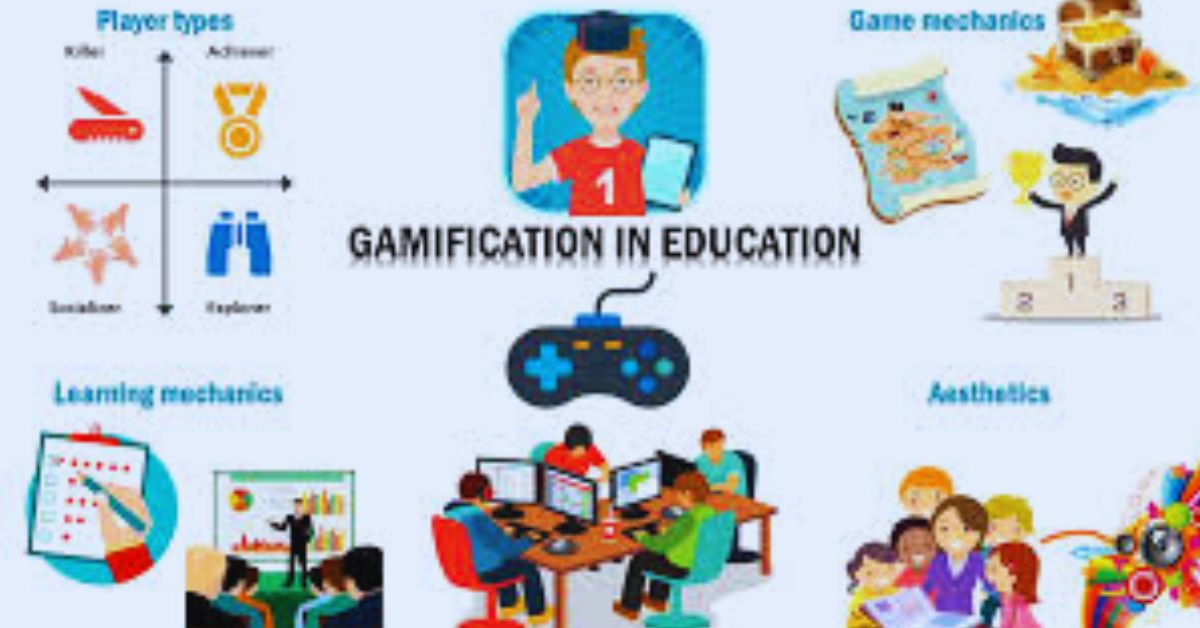Education has undergone a significant transformation over the years. With the advancement of technology, traditional teaching methods are being replaced or supplemented with more interactive and engaging techniques. One such revolutionary approach is gamification in education. By incorporating game elements into learning, educators can make the process more enjoyable and effective for students of all ages.
What is Gamification in Education?
Gamification in education refers to the use of game design elements, such as points, badges, leaderboards, challenges, and rewards, in non-game educational settings. The objective is to increase student engagement, motivation, and participation by making learning feel more like playing a game.
When applied effectively, gamification can turn an otherwise mundane learning experience into an interactive journey, fostering curiosity and enthusiasm among learners.
Benefits of Gamification in Education
1. Enhances Motivation and Engagement
Gamification taps into students’ natural desire for competition, achievement, and recognition. Reward systems such as points, badges, and rankings encourage learners to stay motivated and engaged.
2. Improves Knowledge Retention
Interactive learning through gamification helps students retain information better. Game-based learning makes complex subjects easier to understand and recall.
3. Encourages Active Learning
Instead of passive learning through lectures, students actively participate in challenges, quizzes, and interactive exercises, leading to deeper understanding and practical application of concepts.
4. Provides Instant Feedback
One of the key advantages of gamification is the immediate feedback mechanism. Students can quickly assess their performance and identify areas for improvement, leading to a more effective learning experience.
5. Develops Problem-Solving and Critical Thinking Skills
Many educational games involve solving puzzles, overcoming obstacles, and making strategic decisions, which help develop critical thinking, creativity, and problem-solving abilities.
6. Fosters Collaboration and Social Skills
Gamified education often includes multiplayer or team-based activities, encouraging students to work together, share knowledge, and develop teamwork skills.
Examples of Gamification in Education
1. Duolingo (Language Learning)
Duolingo uses a gamified approach to language learning by incorporating streaks, levels, rewards, and challenges to keep learners engaged and motivated.
2. Kahoot! (Interactive Quizzes)
Kahoot! is a popular educational platform that allows teachers to create fun, competitive quizzes to test students’ knowledge in an engaging way.
3. Classcraft (Role-Playing for Classroom Management)
Classcraft turns the classroom into a role-playing game where students earn points for positive behavior and academic achievements.
4. Minecraft: Education Edition (STEM Learning)
Minecraft’s educational version helps students learn math, coding, science, and engineering through interactive and creative gameplay.
How to Implement Gamification in the Classroom
1. Set Clear Goals and Objectives
Define what you want students to achieve through gamification. Clear goals help in designing relevant and effective game elements.
2. Use a Reward System
Incorporate points, badges, or certificates to recognize students’ achievements and progress, encouraging them to stay engaged.
3. Incorporate Storytelling
A compelling narrative can make gamification more immersive. Students enjoy learning when they feel like they are on an exciting mission.
4. Create Challenges and Competitions
Healthy competition can boost students’ enthusiasm. Organizing leaderboards, quizzes, and interactive challenges keeps learning exciting.
5. Provide Instant Feedback
Use gamified tools that provide real-time feedback so students can track their progress and improve in weaker areas.
6. Make Learning Adaptive
Use gamification techniques that adapt to students’ individual learning paces. Personalized learning paths can make education more effective.
Challenges of Gamification in Education
Despite its numerous advantages, gamification also comes with challenges:
- Overuse of Competition: Too much focus on rankings may lead to stress and demotivation among some students.
- Time and Resource Intensive: Designing and implementing gamified learning experiences requires time, effort, and resources.
- Not Suitable for Every Subject: Some subjects may not easily integrate with gamification elements.
To address these challenges, educators must find a balance between competition and collaboration and ensure that gamification aligns with learning objectives.
Conclusion
Gamification in education has the potential to revolutionize the way students learn. By making learning fun, interactive, and rewarding, it enhances engagement, knowledge retention, and problem-solving skills. However, to maximize its benefits, educators must implement gamification thoughtfully and strategically.
As technology continues to evolve, gamification will play an even greater role in shaping the future of education, making learning a more enjoyable and enriching experience for students worldwide.
